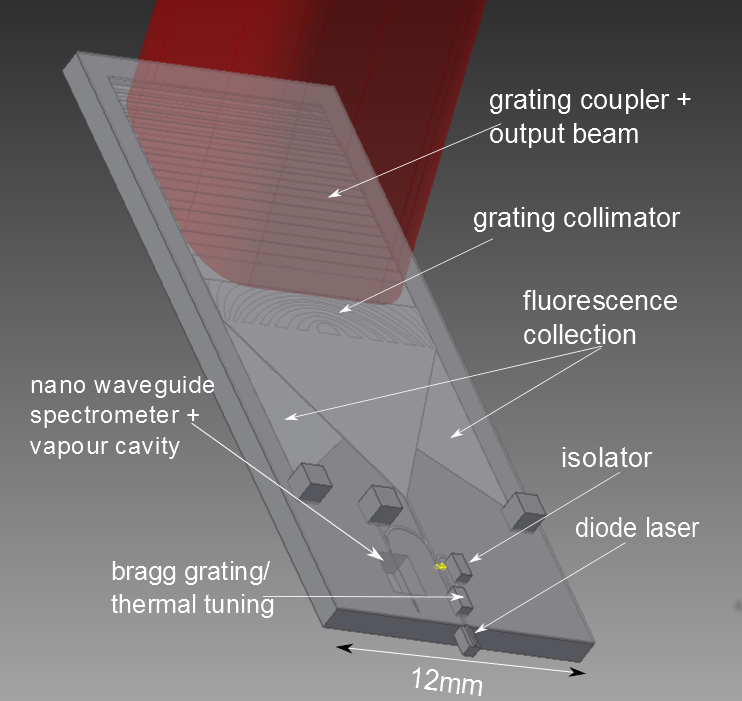Future research...
Hybrid Optics
| As mentioned in the Magneto optical trap section, we can cool atoms with a single laser beam using the grating MOT. However, the beams need to be quite large to trap a sufficient number of atoms: on the order of a centimetre FWHM. This is normally achieved with various lenses on an optical table, but this method has limited scope for small, compact and robust devices. We plan to look at waveguide out-coupler to expand and shape the beam in single planar optical elements. These element would not need alignment and can be mass produced. They may also be used to collect light from the atoms as an integrated detector. | |
| Not all atom manipulation schemes can be achieved with a single beam in one direction. One may need lateral beams across the atom chip for detection, optical pumping, or even to produce optical lattices. We will develop atom chip substrates with transparent AS glass sections which allow us to bring beams through the wafer and into micro-optics, such as prisms, bonded to the atom chip surface. These can be coupled to the planar optical beam shapers to make a compact multilayer chip. | |
| Laser cooling and manipulation of atoms requires highly stable and spectrally pure lasers. Typically for a Rubidium MOT one requires tens of mW of laser power at 780nm, which is stabilized to within a MHz (1 part in 109). Not only that, but the lasers may need to be phase modulated at several GHz, detuned for further cooling and optical pumping, as well as being switched on and off in microsecond timescales. The manipulation lasers (e.g. Raman, or optical dipole trap, lasers) require even more power and more stringent control over frequency, phase and amplitude. Commercial cold atoms devices will need to do all of this in far more compact form with greater reliability and plug'n'play interfaces. The laser chips themselves are very small (mm) and a majority of the control optoelectronics and spectrometers can be significantly reduced in size using optical waveguides and fibres. The development in miniaturization and reliability of similar laser systems has already be carried out by the Telecoms industry to make the internet possible, so we aim to adapt their systems and techniques to the shorter wavelengths used in laser cooling. |

